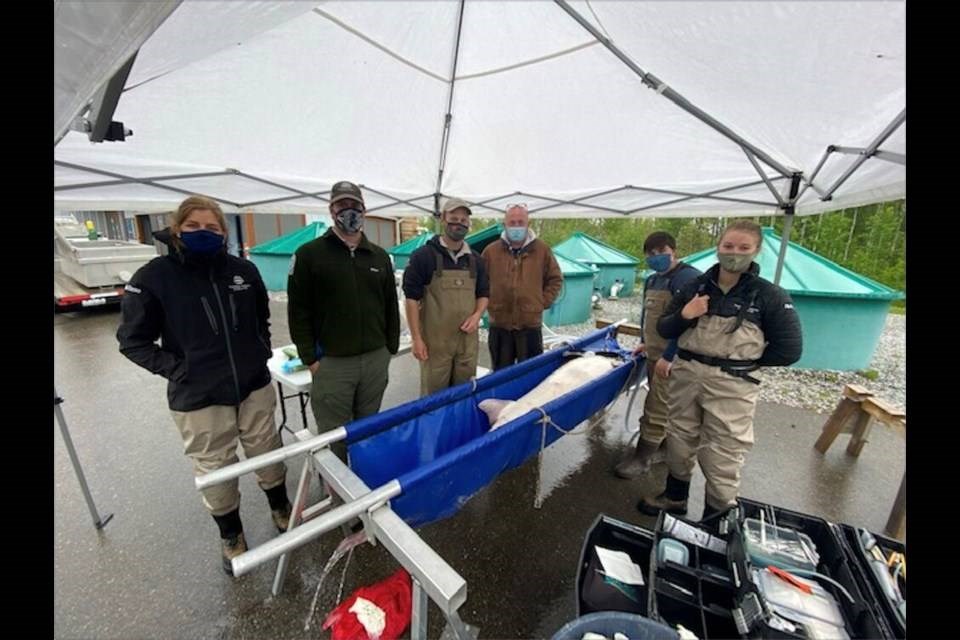Jordan Cranmer reached over the edge of the boat, dipping her hands into the water of the Nechako River.
Below her, an ancient giant rose from the depths.
“At first, I didn’t feel anything. It was really shocking to come up on this huge fish,” says Cranmer, as she recalls pulling in the lead line on a rainy morning April 30. “We just realized the magnitude of what we were getting into.”
At over 293 centimetres long and 152.7 kilograms (336 pounds), the female white sturgeon was the biggest pulled from the river in modern history.
For Cranmer, a junior research technician at Nechako White Sturgeon Conservation Centre, pulling the roughly 100-year-old fish to the surface was just the beginning of a delicate process to bolster a population listed as endangered under Canada’s Species at Risk Act in 2012.
Every year, the group sets out on their 18-foot boats to set ropes studded with hooks and anchored at two points along the river’s bottom. Once the team pulls a white sturgeon to the surface, they transfer it into an inverted stretcher where water runs over its gills and body to keep it comfortable and alive.
From land, the adults are brought in tank trailers to the group’s hatchery in Vanderhoof, B.C. Cranmer says they gently massage the females to work out the eggs into a measuring cup; for the males, they use a syringe to withdraw a semen sample.
Once the eggs are fertilized and then born at the hatchery, two years of regimented feeding and warm water let the juvenile sturgeon reach the size of a five-year-old wild fish.
That’s important because the juveniles “just aren’t surviving into adulthood,” says Cranmer.
“They’re suffocating as eggs,” she says. “We are seeing a really large amount of predation from river otters.”
Cranmer knows that because they keep finding sturgeon transponders in otter latrine sites. Finding healthy adults to spawn, like the one Cranmer pulled from the Nechako in April, is the best starting point to keep the species alive.
Two weeks from now, the conservation centre will start the cycle all over again when they release another batch of two-year-olds into the river.
For a woman raised in a small town, doing her part to save the endangered species goes beyond an obsession with an ancient fish.
“They spawn right in downtown Vanderhoof. It’s important to First Nations people here,” she says.
“It feels like I’m working on a piece of my community’s history and culture.”



